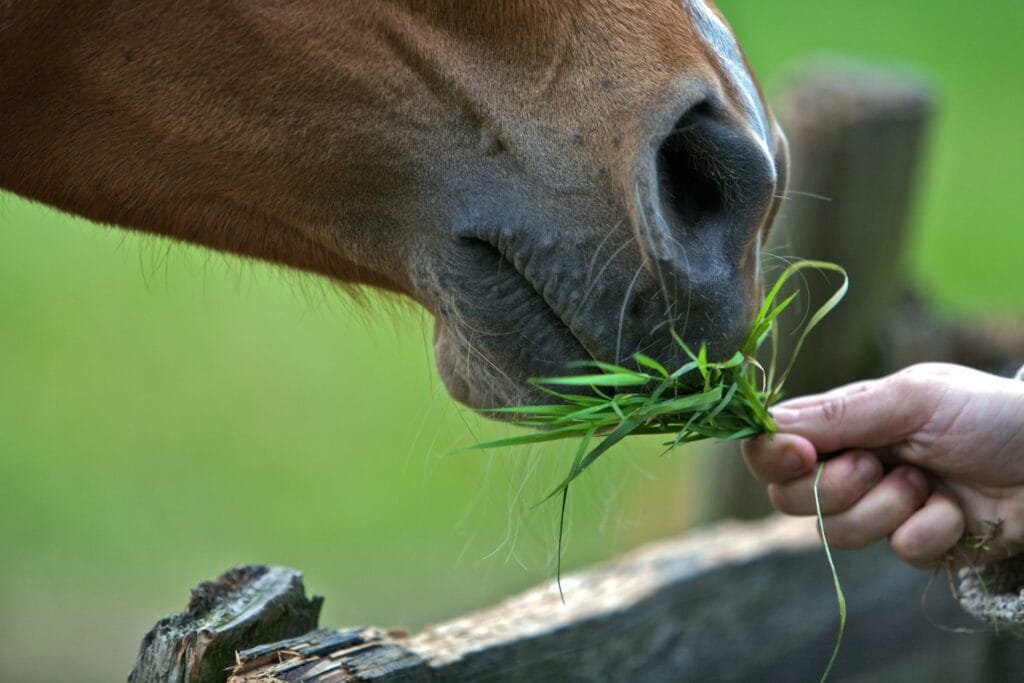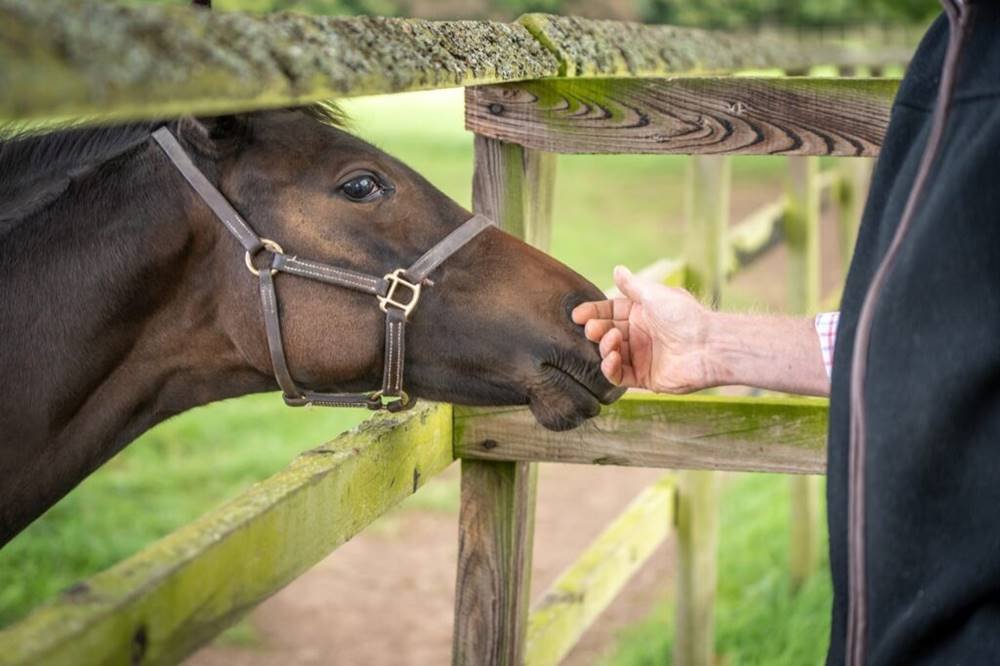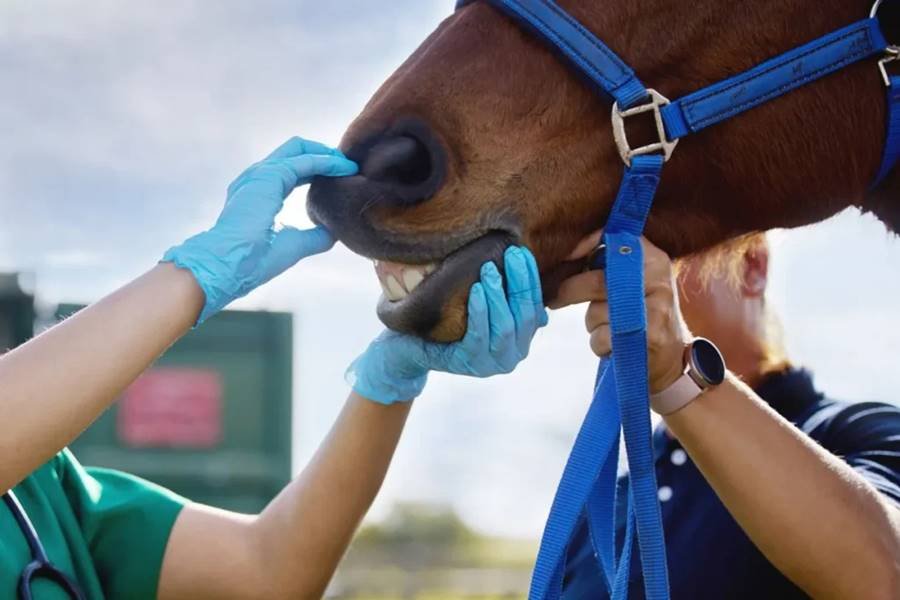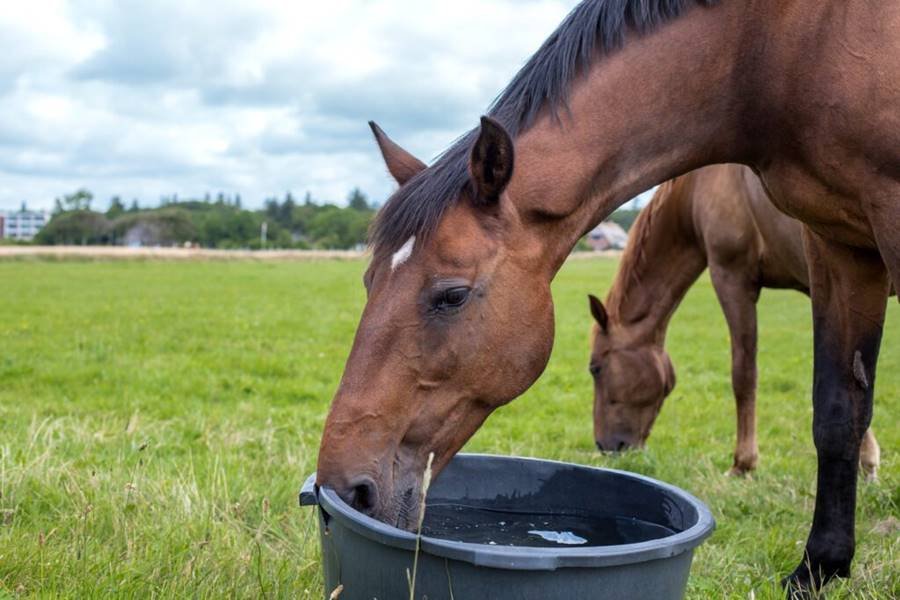As a horse owner, you may have wondered whether it’s harmful for your horse to graze on wet grass.
Horses are natural grazers and are designed to spend a large part of their day eating grass, but certain conditions can make grazing on wet grass a concern. In this article, we’ll answer the common question of whether eating wet grass is bad for horses, and what you should keep in mind when it comes to your horse’s grazing habits.
1. Understanding the Risks of Wet Grass
While horses are typically well-equipped to graze on a variety of plants, eating wet grass can pose some health risks. One of the main concerns is that wet grass may be more difficult to digest for horses, and it can sometimes lead to digestive upset. When grass is wet, either from dew or recent rainfall, it tends to have higher moisture content, making it harder for horses to break down the nutrients properly. This can lead to bloating, discomfort, or, in more serious cases, colic.
2. Colic and Digestive Distress
Colic is a condition that causes abdominal pain and is one of the most common health issues for horses. Wet grass, particularly in large quantities, can contribute to the development of colic by affecting the digestive process. The excessive moisture can slow down digestion, leading to the buildup of gas or other digestive disturbances. Colic can be triggered by many different factors, and wet grass is just one of the potential causes.
Another concern with eating wet grass is the potential for the horse to consume too much grass quickly, which can overwhelm their digestive system. Grazing on moist grass may encourage horses to eat more than usual, increasing the risk of colic or other stomach issues.
3. Grazing and Laminitis Risks
In addition to colic, there is another health concern related to wet grass—laminitis. Laminitis is a painful condition that affects the hooves and can cause severe lameness. Wet grass, especially in spring or early summer, may contain higher levels of sugar (fructans), which can be harmful to horses that are prone to laminitis. Horses with conditions like insulin resistance or metabolic syndrome are more susceptible to laminitis and should be closely monitored when grazing on any kind of grass, particularly when it’s wet.
It’s important to keep an eye on your horse’s grazing habits, especially if you suspect they may have a tendency toward laminitis. Limiting grazing time or restricting access to lush, wet grass can help reduce the risk.
4. Potential for Mold and Fungal Growth
When grass is wet for an extended period, such as after a heavy rain or due to morning dew, it can sometimes lead to the growth of mold or fungus on the grass blades. Horses eating moldy or contaminated grass could ingest harmful spores that may result in respiratory problems or digestive issues. While this is more of a concern if the grass has been wet for a prolonged period, it’s still something to be aware of, especially in areas with high humidity or frequent rainfall.
5. The Importance of Grazing Habits
Although grazing is a natural and healthy activity for horses, it’s essential to manage their grazing habits to prevent overconsumption of wet grass. Allowing horses to graze in moderation is key to their health and well-being. If the grass is wet, it’s a good idea to limit grazing time and monitor their behavior closely.
You can also consider offering your horse hay instead of allowing them to graze in wet conditions, particularly if the grass is lush and potentially high in sugars. Hay provides a safer and more controlled alternative to fresh grass, especially during wet weather when grasses can become more difficult to digest.
6. When is Wet Grass Okay for Horses?
While eating wet grass can pose risks, it’s not necessarily bad for horses in all situations. In fact, light rainfall or dew may not present a significant problem for most healthy horses, especially if they have access to a well-balanced diet and grazing time is limited. If your horse has no underlying health issues, they may be able to enjoy grazing on wet grass without any problems.
However, it’s important to be cautious and consider the overall condition of the grass and the individual needs of your horse. If your horse is prone to digestive problems, laminitis, or obesity, it’s better to avoid grazing on wet grass altogether.
7. Best Practices for Grazing in Wet Conditions
If your horse enjoys grazing on grass, there are several steps you can take to minimize the risks associated with wet grass:
- Monitor grazing time: Limit how long your horse is allowed to graze on wet grass to prevent overconsumption. Keeping grazing sessions to a shorter period of time helps reduce the risk of digestive problems.
- Check the weather: Pay attention to the weather conditions, as prolonged wetness or damp conditions are more likely to make grass harder to digest and increase the risk of mold or fungal growth.
- Offer hay as an alternative: If the grass is particularly wet or your horse is prone to digestive issues, consider offering hay instead of allowing grazing in wet conditions.
- Keep your horse hydrated: Ensure that your horse has access to plenty of fresh water, as hydration is essential for healthy digestion.
- Provide a dry area: If possible, allow your horse to graze in areas where the grass is not soaking wet. This may require managing grazing areas or providing a sheltered spot for grazing.
In general, eating wet grass isn’t necessarily bad for horses, but it does come with potential risks. Wet grass can cause digestive upset, contribute to colic, or increase the risk of laminitis, particularly for horses with certain health conditions. By being mindful of your horse’s grazing habits, monitoring wet weather conditions, and providing alternatives like hay, you can help ensure that your horse stays healthy and comfortable.
Always keep an eye on your horse’s behavior after grazing in wet conditions, and consult your veterinarian if you notice any signs of discomfort or digestive issues. With the right care and management, your horse can enjoy grazing safely and without the risks associated with wet grass.




